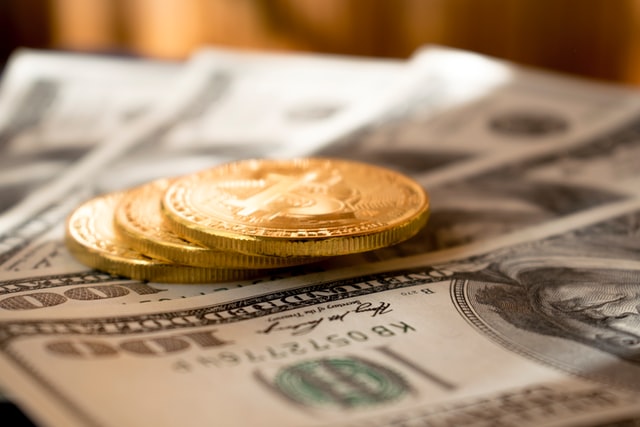Does Money Bring You Happiness? A Literature Review
Introduction
Throughout centuries, philosophers, scholars, and laypeople have wondered whether money brings happiness or not. It is ironic that in a world where industrialism, economic prosperity, and the freedom to purchase luxury goods/services has become a norm, there are a lot of cases of mental illness, depression, and anxiety affecting people everywhere. Indeed, the correlation between money and happiness is not a stronger one. This paper presents a comprehensive literature review outlining the key points from various essays concerning wealth and happiness. It concludes by providing several limitations of this research and proposing future steps for linking wealth to happiness.
Are Rich People Happier?
In the essay, Are Rich People Happier?, the author suggests that a majority of rich people are not happier than poor people (depending on circumstances). There are several nations where poverty severely threatens the peoples’ well-being. In this regard, the best example could that be of India where the difference between being wealthy and being poor could mean having adequate food. Surprisingly, however, there are millionaires in the Western world who are more miserable. Though in India, having more money means generally being better off and happier (since one’s economic situation is closely tied to the attainment of necessities), this is not always the case in Western countries. In Canada, the United States, and many European countries, there is a weak correlation between happiness and personal income. Blue collar workers can be just as happy as white collar workers. Even extremely wealthy Americans were demonstrated not to have much higher levels of happiness than the average middle-class citizen. According to the above-mentioned essay, the ability to adapt plays a major role in happiness: while historically, humans were happy living in smaller houses with fewer goods and luxuries; people have now learned to adapt to the amenities afforded us them in the modern world. It is likely that we would be no longer happy living in the conditions the cavemen used to live in, they were happy at that time.
Economic Growth Boost Human Morale?
In Does Economic Growth Boost Human Morale? the author argues that an increase in wealth does not usually lead to the attainment of more happiness. According to him, it is extremely likely that lottery winners will only receive a temporary burst of happiness and soon return to their regular levels of contentment as soon as the ‘burst’ is over. Similarly, a study showed that those with increased incomes did not display more happiness as compared to people whose incomes remained unchanged. As far as Americans are concerned, a majority of them enjoy more luxuries and opportunities for recreation than they did during the 1920s. They can utilize microwave ovens, own cars (often multiple in one household), home computers, laundry machines, and dryers. The use of air conditioners has increased from 15% to 73%. However, a survey showed that only 33% of Americans rated themselves as extremely happy in 1998 (whereby the percentage was 35 in 1957 when Americans owned fewer ‘things’). The rate of divorce grew and teenagers are now more likely to commit suicide.
What’s So Bad about Being Poor?
In What’s So Bad about Being Poor? Murray conducts a thought experiment to discover the reasons people living in abject poverty might not be as miserable as we think. Driving down a road, he wondered what would happen if he could not go back to his hometown but was instead forced to stay in a village in Thailand. He would lack running water or a home made from proper brick and might own a transistor radio and a bicycle for transportation (versus a luxury sedan). The author interestingly notes that though his career opportunities would have to be limited in this situation, he could learn to become a farmer and—using the entrepreneurial knowledge acquired in the first world—sell and market some of his crops. In terms of personal life, Thai women are friendly and charming, and he could marry and have children with one. Having a relatively lucrative (at least for the time and place) career as a farmer, being a successful husband, father, and teacher to his children and creating lasting friendships would soon dissipate any concerns or dissatisfaction with the poor material conditions of his life. According to him, the definition of poverty is relative: if one defines poverty as money, all the citizens of the Thai village are poor. However, if poverty means not being able to live a decent but less materialistically fruitful life, rarely anyone there is poor. The essay is interesting because it reconfigures what we believe poverty to be. It introduces the idea that there are more important things such as family connections, the freedom to work, and close friendships than material wealth.
Higher Incomes but at a Price
In Higher Incomes but at a Price, Warren claims that although there has been an upward trend in the amount earned by average American families, the cost of living and even debt has also dramatically increased. The average dual-income family earns $76,500 a year. Warren provides a chart demonstrating that the average family in 2006 has 12.1% debt. On the other hand, the average family from 1972-1973 had only 1.3% debt. Although the middle-class family appears to be making a lot of money, it has buried itself in debt. In Overconsumption, the Standard Theory, the author believes that the money people lost went to such luxury goods as designer running shoes, air-conditioned cars, and restaurant meals. The way average Americans increase their consumption is by increasing debt and decreasing savings. It means that, effectively, they own ‘less’ in actuality and ultimately becoming poorer since much of what they ‘purchase’ is on credit. The essay notes catalogues and advertising as the culprit for this trend.
Limitations
While contemplating on whether money can bring us happiness, it is also important to assess the various limitations of the discussed studies and articles. One limitation could be the relatively small amount of information concerning the true definition of happiness. This is because the concept of happiness itself is never qualified or explained. Happiness for one person could be having and taking care of a family or having the freedom to work independently. For another person, however, happiness could mean a higher income and owning more material possessions. Another limitation is the lack of information pertaining to the difference(s) between the happiness level of the blue-collar and white-collar workers. Though the research claims that the white-collar worker is on average not much happier than the blue-collar worker, the reader never quite becomes familiar with what ‘much’ means. It could mean that the white-collar worker is substantially happier or conversely that the difference is insignificant enough to call it an almost non-difference. In any case, the ‘much happier’ is not clearly defined. Therefore, the reader never comes to understand the true difference between the happiness levels of a white-collar and blue-collar worker.
Conclusion
When looking at the relationship between money and happiness, the essays mentioned demonstrate a relatively negative correlation i.e. money cannot bring happiness (at least in the Western world). However, it would also be important to expand the extent of the research and research question to include notions of what happiness means to various people. Furthermore, the research could also ask participants about what happiness actually stands for? Individuals are liable to answer these questions in different ways, contributing to varied notions of happiness.
Reference
Goetzmann, William n. Money Changes Everything. S.l.: Princeton U Pres, 2017. Print.

